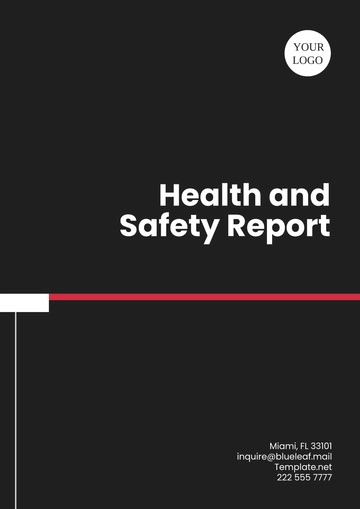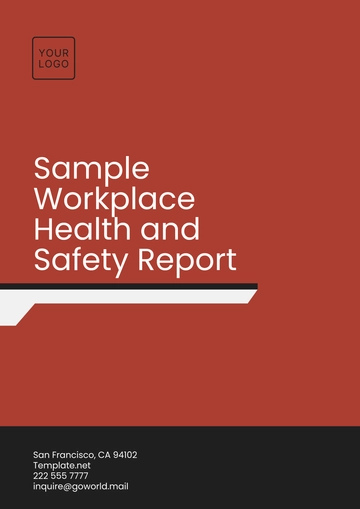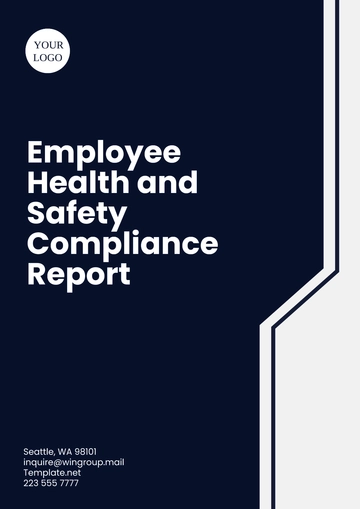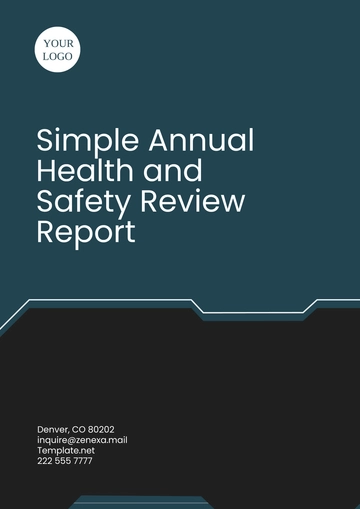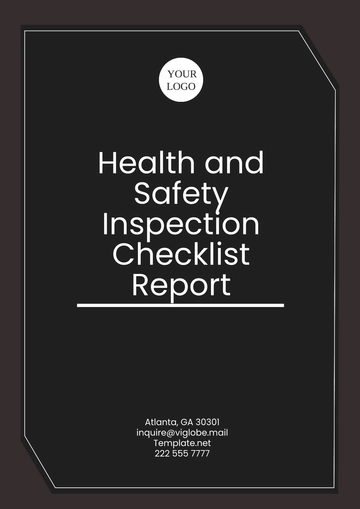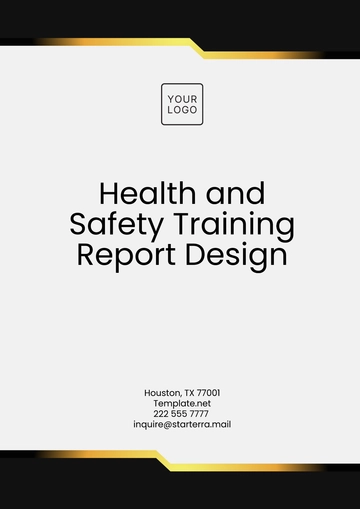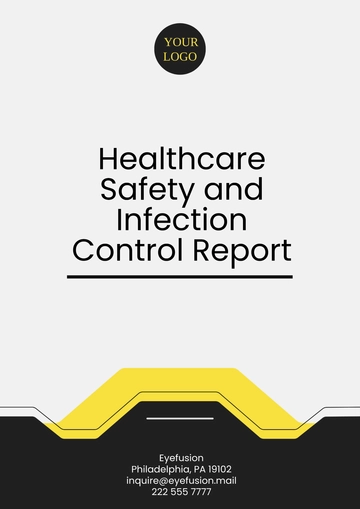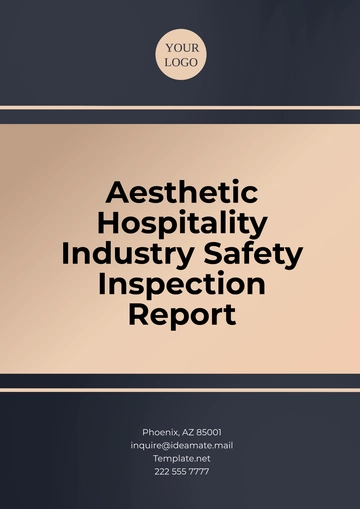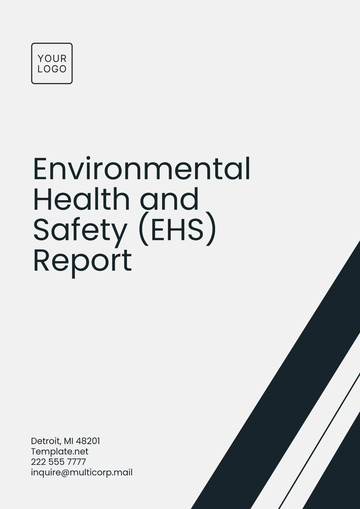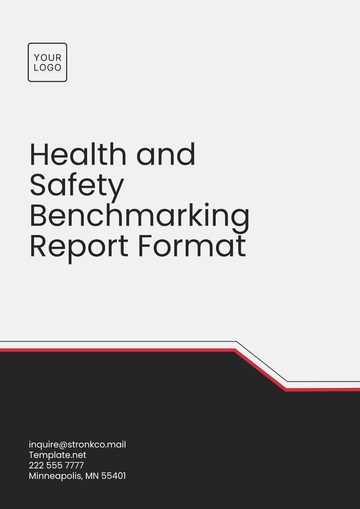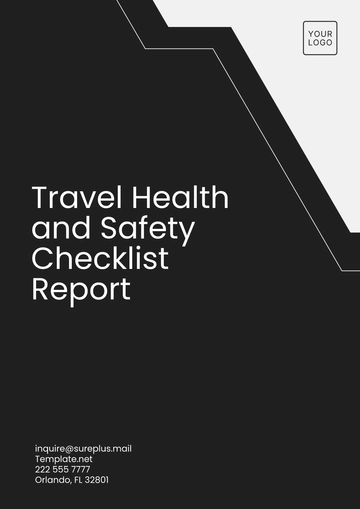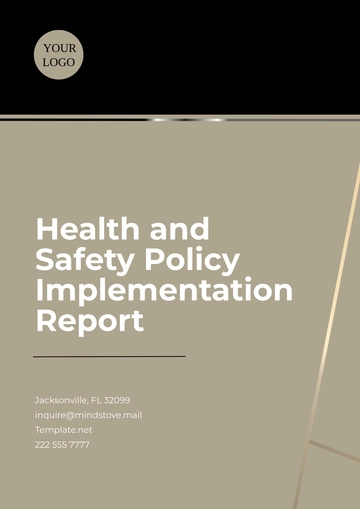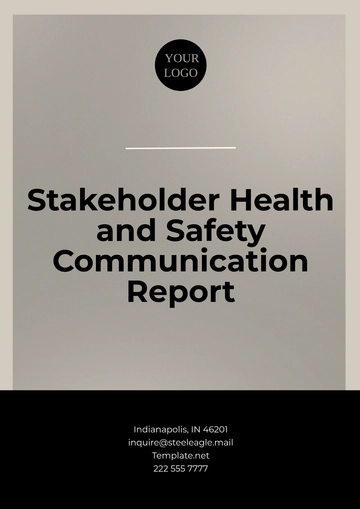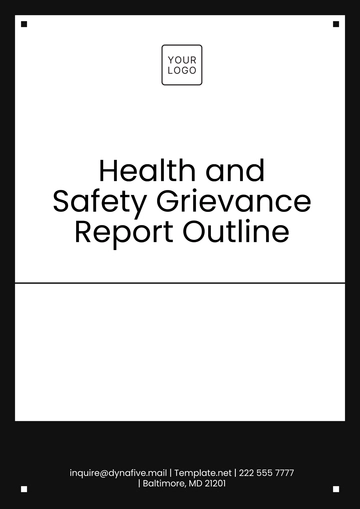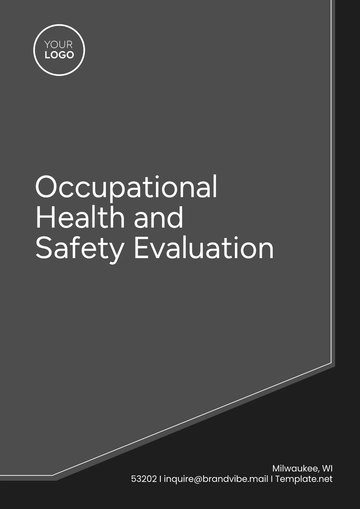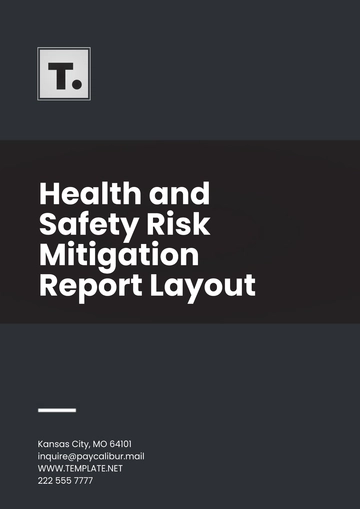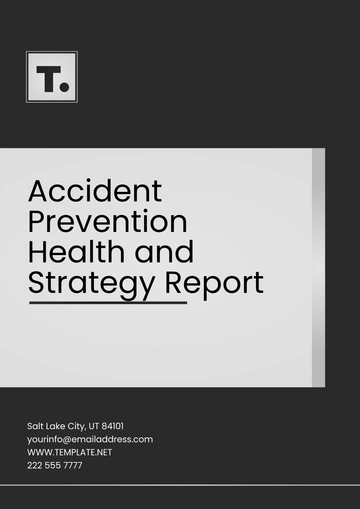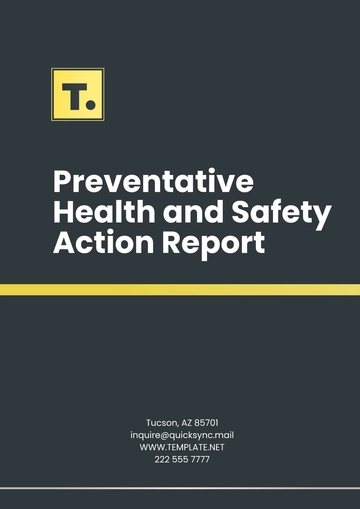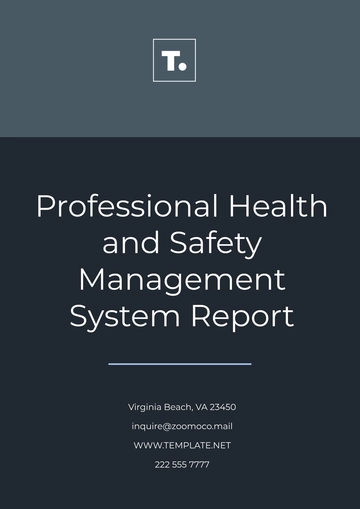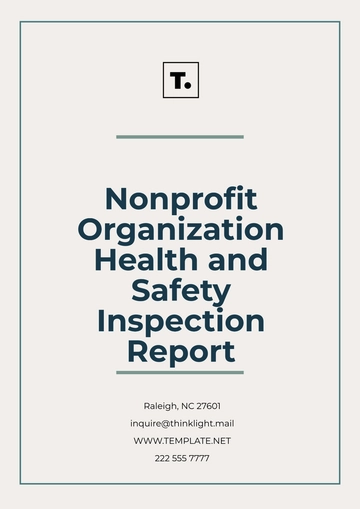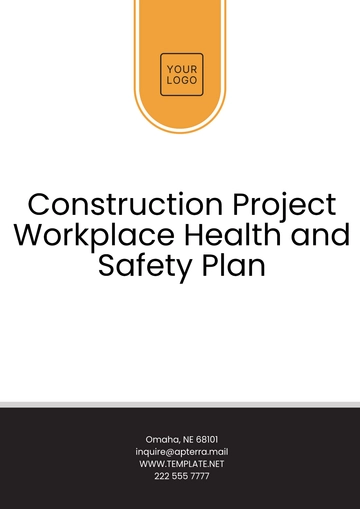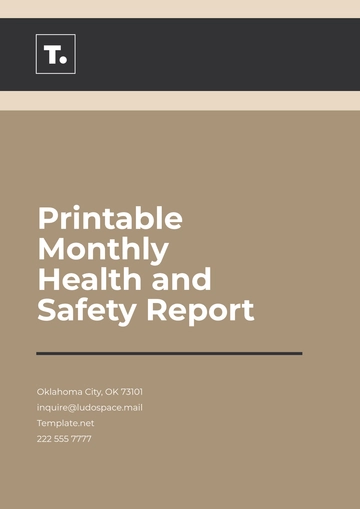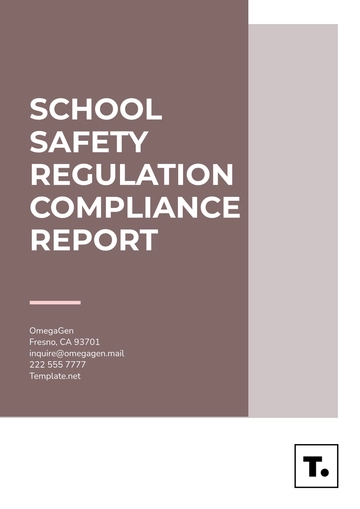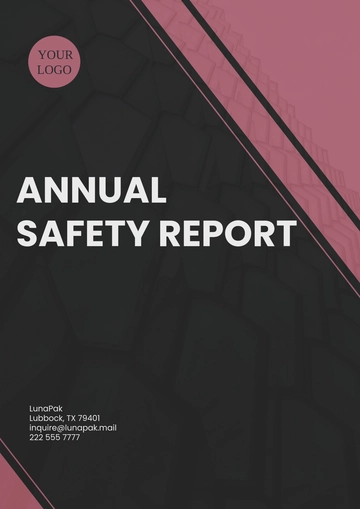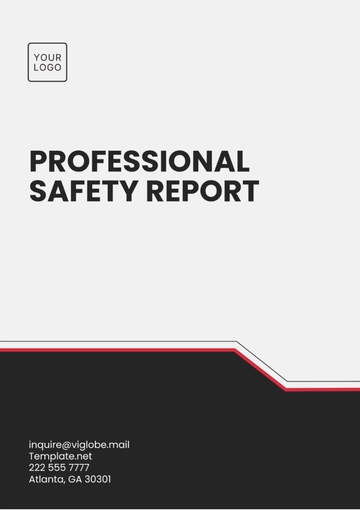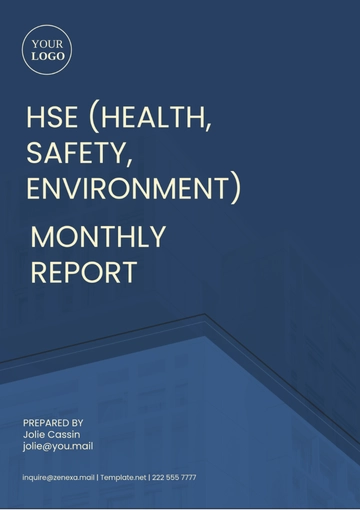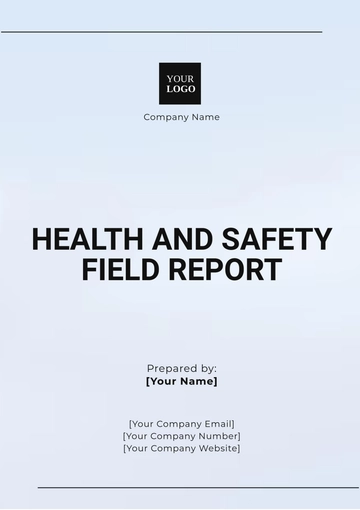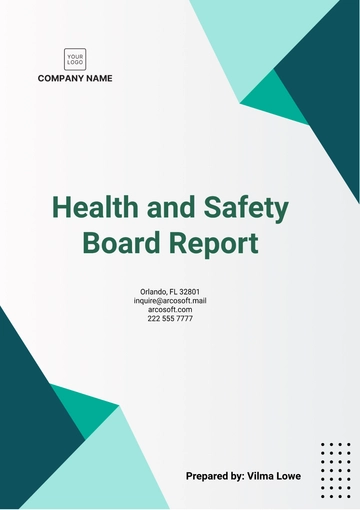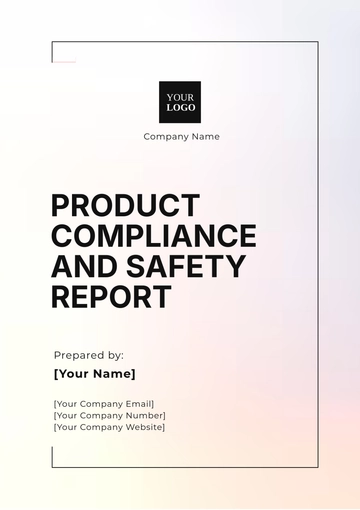Free Architecture Safety Report
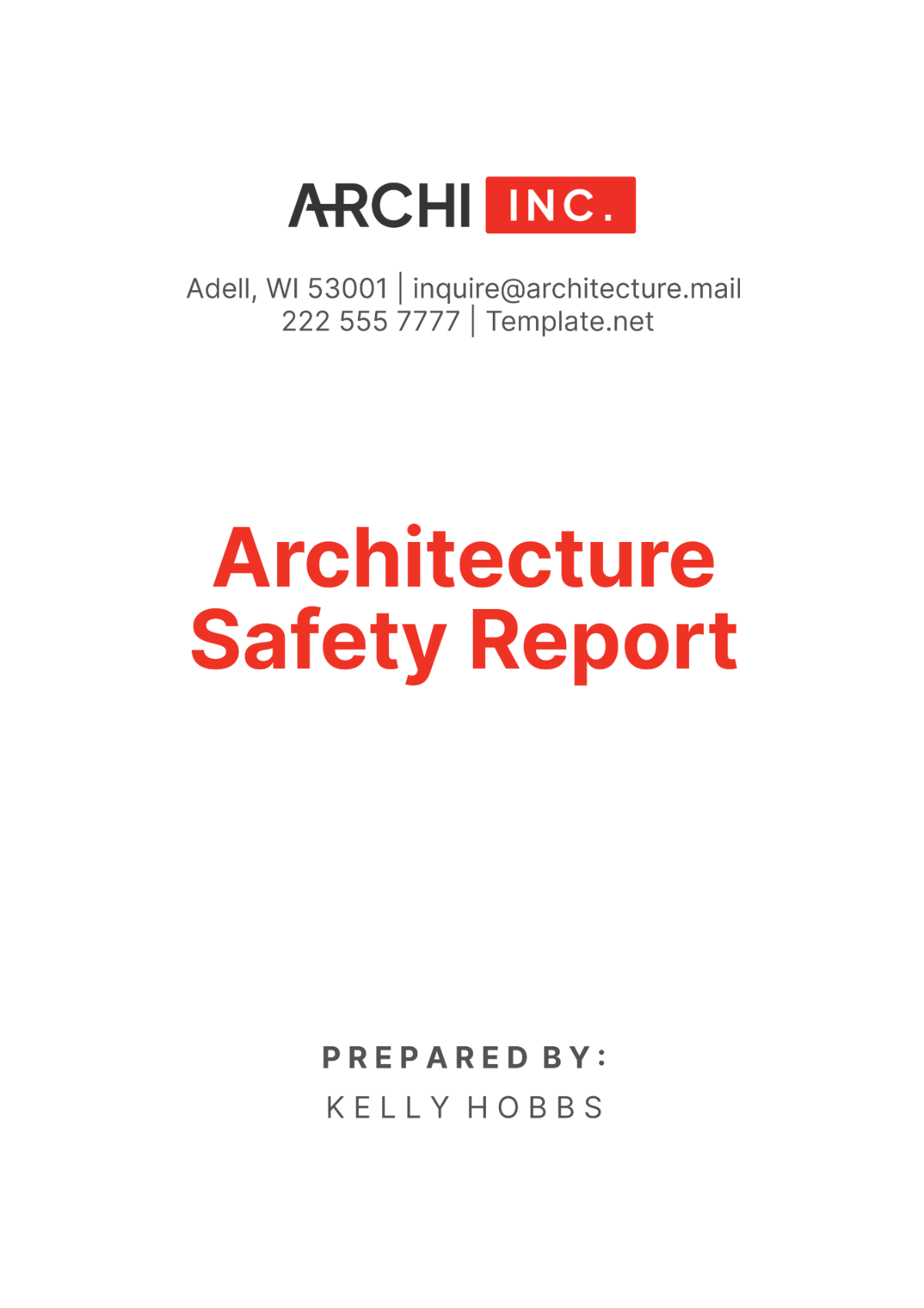
I. Executive Summary
This Safety Report highlights the main hazards identified, the potential risks associated with these hazards, and the proposed safety measures to mitigate these risks.
In the course of our analysis, we identified several significant hazards, including structural instability, fire hazards, material failure, and environmental impact. Each of these hazards presents unique challenges and risks that need to be addressed to ensure the safety and success of our architectural projects at [Your Company Name].
Our proposed safety measures are designed to directly address these identified hazards. These measures, which include structural reinforcement, fire safety systems, quality control, and an environmental management plan, demonstrate [Your Company Name]'s commitment to maintaining a safe working environment and complying with all relevant safety regulations.
This report is crucial for stakeholders to understand the importance of safety in our architectural projects at [Your Company Name]. By identifying and mitigating these risks, we demonstrate our commitment to safety and regulatory compliance.
II. Introduction
A. Purpose
Several objectives underpin this safety report:
Safety Assurance: Ensuring the safety of all architectural projects undertaken by [Your Company Name] is the primary objective. This involves identifying potential hazards, assessing the associated risks, and proposing measures to mitigate these risks.
Regulatory Compliance: Demonstrating [Your Company Name]'s compliance with local and international safety regulations in the field of architecture is another key objective. This report serves as evidence of our commitment to maintaining a safe working environment.
Stakeholder Communication: This document also functions as a communication tool for stakeholders, including clients, employees, and regulatory bodies. It transparently presents our safety practices and procedures, fostering trust and confidence in our operations.
B. Scope
The scope of this document covers several key areas:
Project Scope: All architectural projects undertaken by [Your Company Name] during the specified period are covered in this report. This includes both completed projects and those currently in progress.
Safety Aspects: The focus of this document is on safety aspects related to the design and execution of architectural projects. This includes, but is not limited to, structural safety, fire safety, and occupational safety.
Risk Assessment: A comprehensive risk assessment is included in the report, identifying potential hazards and evaluating the associated risks.
Safety Measures: The safety measures implemented by [Your Company Name] to mitigate identified risks are also covered in this report. This includes both preventive measures and response strategies.
Regulatory Compliance: Lastly, the report outlines [Your Company Name]'s compliance with relevant safety regulations, providing evidence of our commitment to legal and ethical practices.
III. Methodology
A. Data Collection
Data collection was a critical step in our safety report. The data collected included:
Project Information: Detailed information about each architectural project was gathered. This included design plans, construction materials, and project timelines, which provided a comprehensive overview of each project.
Safety Records: Safety records from past projects were reviewed. This allowed us to identify recurring hazards and effective safety measures, contributing to a safer work environment.
Regulatory Guidelines: Local and international safety regulations were consulted. This ensured our projects complied with all relevant guidelines and maintained a high standard of safety.
Site Inspections: Regular site inspections were conducted. These inspections allowed us to identify potential hazards in real-time, ensuring immediate action could be taken.
Stakeholder Input: Input from all stakeholders was sought. This included clients, employees, and regulatory bodies, providing a comprehensive understanding of potential safety issues.
B. Analysis Techniques
Several techniques were employed to analyze the collected data:
Risk Assessment: Risk assessment techniques were used to evaluate the potential risks associated with each identified hazard. This allowed us to prioritize hazards and allocate resources effectively.
Root Cause Analysis: Root cause analysis was conducted to understand the underlying causes of identified hazards. This helped us to prevent similar hazards from occurring in the future.
Safety Audit: A safety audit was performed to assess the effectiveness of existing safety measures. This ensured that our safety measures were up-to-date and effective.
Regulatory Compliance Check: Compliance with all relevant safety regulations was verified. This ensured that our practices were not only safe but also legally compliant.
IV. Findings
Here, we will present the hazards identified during the analysis and the potential risks associated with each identified hazard. The following table provides a summary of the key findings:
Hazard | Potential Risk | Risk Level |
|---|---|---|
Structural Instability | Potential collapse of structure | Low |
Fire Hazard | Potential for fire due to faulty wiring | High |
Material Failure | Potential for material degradation over time | Low |
Environmental Impact | Potential harm to local ecosystems | Medium |
A. Structural Instability
Structural instability was identified as a low risk during our analysis. The potential for structural collapse poses a risk to both the integrity of the project and the safety of individuals within the structure. Mitigation strategies include rigorous structural analysis and the use of high-quality construction materials.
B. Fire Hazard
Fire hazards, particularly those resulting from faulty wiring, were a key finding. Classified as a high risk, fires can cause significant damage and pose a safety threat to occupants. Regular electrical inspections and adherence to electrical safety standards are crucial in mitigating this risk.
C. Material Failure
The potential for material failure over time was identified as a low risk. However, even low risks require attention and mitigation strategies. Regular inspections and maintenance, as well as the use of high-quality materials, can help prevent material failure.
D. Environmental Impact
The potential harm to local ecosystems was another risk identified. Classified as a medium risk, environmental impacts can result in regulatory penalties and harm [Your Company Name]'s reputation. Sustainable practices and environmental impact assessments can help mitigate this risk.
In total, four key hazards were identified during the analysis. Each hazard has its own associated risks and requires specific mitigation strategies. Further insights revealed the interconnected nature of these risks. For example, a structural failure could potentially lead to a fire hazard if it results in damaged wiring. Therefore, a holistic approach to safety is necessary, where the mitigation strategies for one risk also consider their impact on other potential hazards.
The importance of these findings cannot be overstated. They not only ensure the safety of our architectural projects but also contribute to the reputation and credibility of [Your Company Name]. By identifying and mitigating these risks, we demonstrate our commitment to safety and regulatory compliance.
V. Recommendations
A. Safety Measures
Safety measures are crucial in mitigating the identified risks. The proposed measures include:
Structural Reinforcement: For the low risk of structural instability, structural reinforcement and regular maintenance can ensure the stability of our structures. This includes using high-quality construction materials and following best practices in structural design.
Fire Safety Systems: Given the high risk associated with fire hazards, installing comprehensive fire safety systems is recommended. This includes smoke detectors, fire extinguishers, and automatic sprinkler systems.
Quality Control: To mitigate the low risk of material failure, rigorous quality control measures should be implemented. This includes sourcing materials from reliable suppliers and conducting regular inspections.
Environmental Management Plan: To address the medium risk of environmental impact, an environmental management plan should be developed. This includes measures to minimize waste, reduce energy consumption, and protect local ecosystems.
B. Implementation Strategies
Effective implementation strategies are key to ensuring the success of the proposed safety measures:
Training Programs: Regular safety training programs can ensure that all employees are aware of the safety measures and know how to implement them effectively.
Safety Protocols: Clear safety protocols should be established and communicated to all employees. This includes procedures for regular inspections, incident reporting, and emergency response.
Monitoring Systems: Monitoring systems should be installed to track the effectiveness of the safety measures. This includes safety performance metrics and regular safety audits.
Feedback Mechanism: A feedback mechanism should be established to continuously improve the safety measures based on the experiences and suggestions of employees.
VI. Conclusion
This report underscores the importance of safety in the architectural projects undertaken by [Your Company Name]. The identification and mitigation of hazards such as structural instability, fire hazards, material failure, and environmental impact are not just regulatory requirements but also a testament to [Your Company Name]'s commitment to excellence and safety.
By addressing these risks proactively, [Your Company Name] not only ensures the successful completion of its architectural projects but also safeguards the well-being of all stakeholders involved. This commitment to safety is what sets [Your Company Name] apart and ensures its continued success in the field of architecture.
- 100% Customizable, free editor
- Access 1 Million+ Templates, photo’s & graphics
- Download or share as a template
- Click and replace photos, graphics, text, backgrounds
- Resize, crop, AI write & more
- Access advanced editor
Maintain safety standards with the Architecture Safety Report Template! Available on Template.net, this editable report helps you document safety measures and incidents accurately. The customizable layout allows you to adapt the report to your specific needs. With the AI Editor Tool, you can create a thorough safety report with ease!
You may also like
- Sales Report
- Daily Report
- Project Report
- Business Report
- Weekly Report
- Incident Report
- Annual Report
- Report Layout
- Report Design
- Progress Report
- Marketing Report
- Company Report
- Monthly Report
- Audit Report
- Status Report
- School Report
- Reports Hr
- Management Report
- Project Status Report
- Handover Report
- Health And Safety Report
- Restaurant Report
- Construction Report
- Research Report
- Evaluation Report
- Investigation Report
- Employee Report
- Advertising Report
- Weekly Status Report
- Project Management Report
- Finance Report
- Service Report
- Technical Report
- Meeting Report
- Quarterly Report
- Inspection Report
- Medical Report
- Test Report
- Summary Report
- Inventory Report
- Valuation Report
- Operations Report
- Payroll Report
- Training Report
- Job Report
- Case Report
- Performance Report
- Board Report
- Internal Audit Report
- Student Report
- Monthly Management Report
- Small Business Report
- Accident Report
- Call Center Report
- Activity Report
- IT and Software Report
- Internship Report
- Visit Report
- Product Report
- Book Report
- Property Report
- Recruitment Report
- University Report
- Event Report
- SEO Report
- Conference Report
- Narrative Report
- Nursing Home Report
- Preschool Report
- Call Report
- Customer Report
- Employee Incident Report
- Accomplishment Report
- Social Media Report
- Work From Home Report
- Security Report
- Damage Report
- Quality Report
- Internal Report
- Nurse Report
- Real Estate Report
- Hotel Report
- Equipment Report
- Credit Report
- Field Report
- Non Profit Report
- Maintenance Report
- News Report
- Survey Report
- Executive Report
- Law Firm Report
- Advertising Agency Report
- Interior Design Report
- Travel Agency Report
- Stock Report
- Salon Report
- Bug Report
- Workplace Report
- Action Report
- Investor Report
- Cleaning Services Report
- Consulting Report
- Freelancer Report
- Site Visit Report
- Trip Report
- Classroom Observation Report
- Vehicle Report
- Final Report
- Software Report
